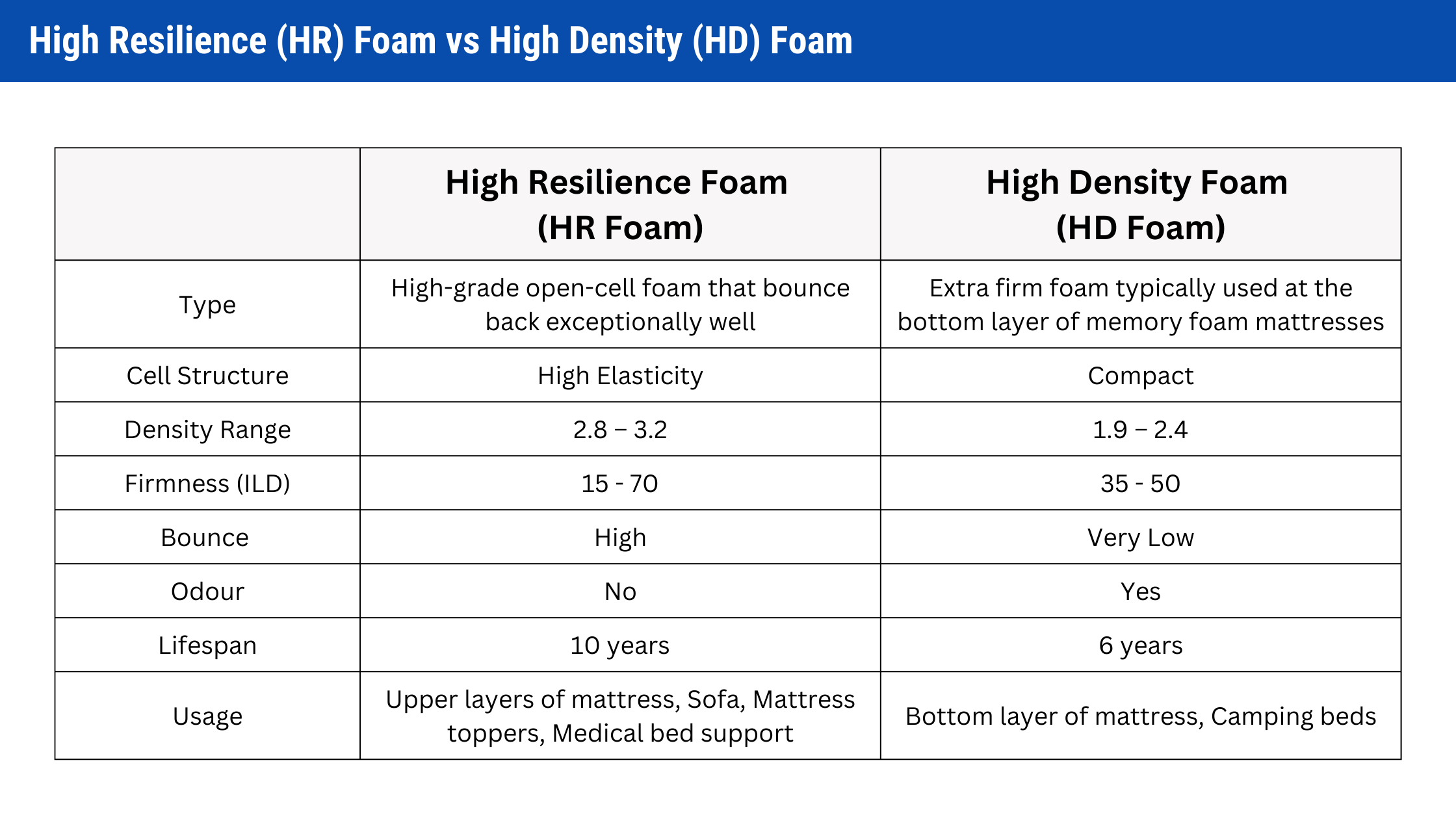HD Foam vs. HR Foam: Which one is right for you?

When it comes to choosing the perfect mattress or cushioning material, you're often faced with a multitude of options. Among the most popular choices are HD Foam and HR Foam, both of which offer unique characteristics and benefits. In this article, we'll break down the differences between HD Foam and HR Foam, helping you make an informed decision that ensures a good night's sleep or comfortable seating. What is HD Foam?HD Foam, or High-Density Foam, is a type of foam known for its firmness and durability. It is made by compressing layers of foam material to create a dense and supportive structure. This foam is commonly used in mattresses, sofa cushions, and automotive seating due to its ability to provide ample support and longevity. Advantages of HD Foam:
What is HR Foam?HR Foam, or High-Resilience Foam, is another popular choice for mattresses and cushions. It is engineered to offer both comfort and support. HR Foam is created by adding chemicals during the manufacturing process, resulting in a foam that can quickly regain its original shape after compression. Advantages of HR Foam:
Choosing Between HD Foam and HR FoamThe choice between HD Foam and HR Foam largely depends on your personal preferences and needs:
In the HD Foam vs. HR Foam debate, there is no one-size-fits-all answer. The right choice for you depends on your individual needs and preferences. HD Foam excels in durability and support, while HR Foam offers a softer, more contouring feel with excellent pressure relief. Consider your sleeping position, firmness preference, and budget when making your decision. Ultimately, both foams can provide a comfortable and restful experience, so choose the one that aligns best with your unique requirements. Feel free to contact us to discuss any of your requirements. |




